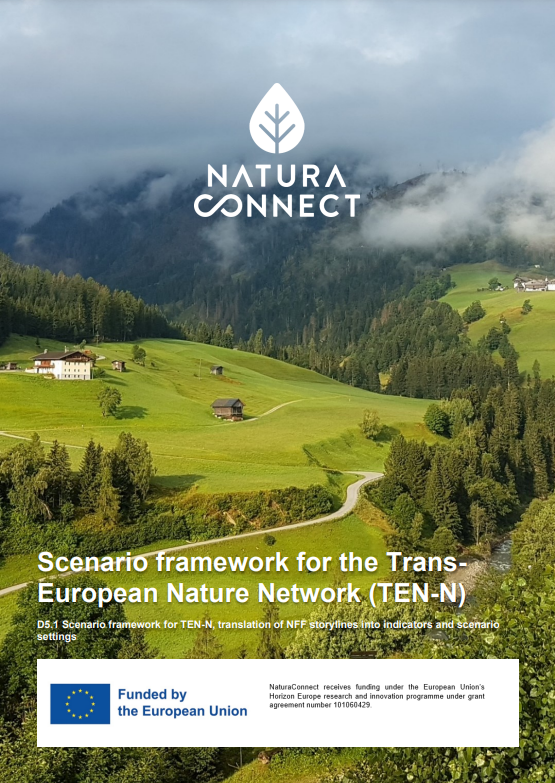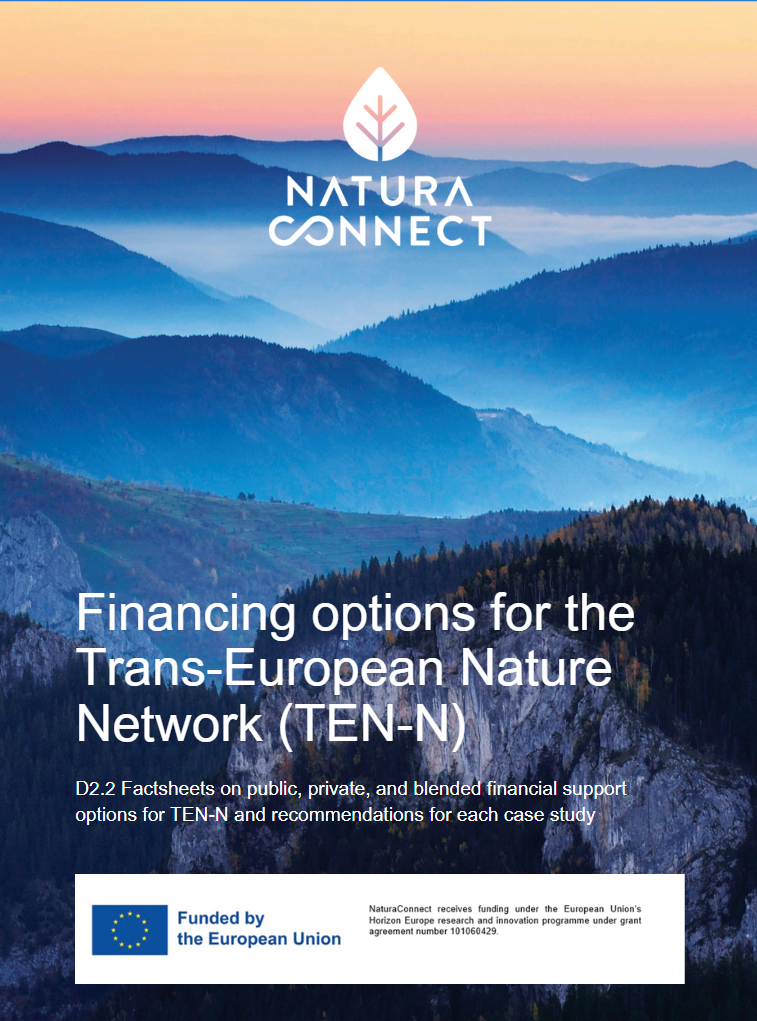Deliverables.

D7.1 Report on network problem formulations, targets and preferences, including guidance and data on targets and optimal TEN-N design criteria
This deliverable is the output of task 7.1 and 7.2. This includes methods and data of quantitative and qualitative targets for species, habitats and their services as well as objective functions, constraints and design criteria for maximizing coherence, adequacy and resilience of conservation networks.
Authors: Martin Jung (IIASA), Marco Davoli (US), Thiago Cavalcante (UH), Louise O’Connor (IIASA), Alessandra D’Alessio (US), Marta Cimatti (US), Michela Pacifici (US), Jutta Beher (IIASA), Piero Visconti (IIASA), Moreno Di Marco (US) & Heini Kujala (UH)
DOI: https://doi.org/10.3897/arphapreprints.e138574

D6.1 Guidelines for connectivity conservation and planning in Europe with supporting webbased inventory and databases
This report presents a coherent methodological framework and guidelines for mapping functional and structural connectivity at the European scale, as part of the Horizon Europe NaturaConnect project, which is supporting EU Member States in developing a coherent TEN-N of protected and conserved areas.
Author(s): Francisco Moreira, Filipe S. Dias, Jeremy Dertien, Ana Ceia Hasse, Luis Borda-de-Água, Silvia Carvalho, Miguel Porto, Francesca Cosentino, Luigi Maiorano, Andrea Sacchi, Luca Santini, Florian Borgwardt, Georg Gruber, Nikolaj Poulsen, Rafaela Schinegger, Carina Seliger, Néstor Fernández

D5.1 Scenario framework for TEN-N, translation of NFF storylines into indicators and scenario settings
The report documents the methods to produce scenarios and the storylines of these scenarios using the IPBES Nature Futures Framework.
Author(s): Claudia Fornarini, Alessandra D’Alessio, Jeremy Dertien, Néstor Fernández, Francisco Moreira, Anandi Sarita Namasivayam, Louise O’Connor, Henrique M. Pereira, Peter Verburg, and Carlo Rondinini

D4.1 Spatial opportunities and constraints for green infrastructure network design
This report describes the methodology developed and implemented to establish a coherent set of cost layers for use in NaturaConnect’s spatial conservation prioritisation efforts.
Author(s): Douglas Spencer, Martijn van der Marel, Alexandra Marques, Clara Veerkamp, Aafke Schipper, Peter Verburg, Anandi Sarita Namasivayam, Martin Jung, Piero Visconti, Louise O’Connor, Heini Kujala and Moreno Di Marco.
DOI: https://doi.org/10.3897/arphapreprints.e123365

D3.1 Report and data on the biodiversity, protected areas and environmental and socioeconomic data available for the project. Including data gap analysis
This report presents an overview of data identification and documentation related to biodiversity, ecosystem services, and the associated drivers, pressures, and response mechanisms.
Author(s): Laetitia Navarro, Francesca Cosentino, Virgilio Hermoso, Luigi Maiorano, Maria Paniw, Eloy Revilla, Andrea Sacchi, Luca Santini, Zulima Tablado, Wilfried Thuiller
DOI: https://doi.org/10.3897/arphapreprints.e142876

D2.2 Financing options for the Trans-European Nature Network (TEN-N): Factsheets on public, private, and blended financial support options for TEN-N and recommendations for each case study
This factsheet series describes the available sources of funding for the Trans-European Nature Network (TEN-N) and characterises their relevance to the costs involved in setting up the network. Each factsheet outlines the relative strengths and limitations of each source of funding or finance in relation to protected areas and connectivity projects. The review looks at both public funding through EU sources and private finance options.
Author(s): Evelyn Underwood, Gabrielle Aubert, Daniel Veríssimo
DOI: https://doi.org/10.3897/arphapreprints.e155364

D2.1 Review and synthesis of best practices in governance and land-use policies to implement TEN-N
This document reviews and synthesizes information on existing land-use planning and land management policy and guidance for GI management across countries and administrative levels. It compiles best practices, which are made available as a report in English and executive summaries in 18 languages for the 6 case studies.
Author(s): Joana Bores, Hildegard Meyer, Evelyn Underwood, Mila Sirychenko, Wouter Langhout, Peer von Döhren, Daniel Veríssimo, Balázs Horváth, Kenny Meganck, Alina Blaga, Måns Ingvarsson, Gabrielle Aubert, Barbara Herrero, Matea Osti, Anouk Puymartin
DOI: https://doi.org/10.3897/arphapreprints.e139236
Explore the executive summaries available in 18 languages!

D1.3 Report on the Stakeholder Analysis including evaluation of engagement, training needs and capacity building
This report provides an overview of the stakeholder engagement during the first half of the project, outlines the capacity building approach and briefly discusses the main communication activities. An overview of applied methods in the stakeholder analysis, results from the stakeholder mapping and an evaluation of the engagement activities conducted until end of 2023 are described.
Author(s): Marit Schnepf, Simone Prestes Dürrnagel, Giacomo Laghetto, Teresa Pastor, Carol Ritchie
DOI: https://doi.org/10.3897/arphapreprints.e132163

